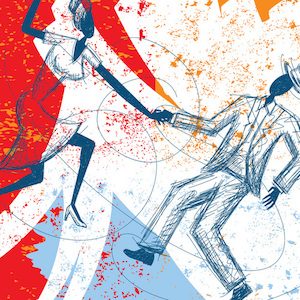Emotionally Focused Therapy (EFT) is developed from the premise that: the way individuals deal with their own emotions affects their partners. Developed for couples in the 1980s, this attachment-oriented therapy assumes that clients have deep needs for emotional contact and safe connections. When these needs are not met, very negative interactional patterns can occur. EFT teaches partners to send emotional messages that result in safe feelings, which are the heart and soul of psychosocial bonds.
EFT sessions have the following three phases:
- Bonding and emotional awareness .
- Determining and exploring maladaptive emotion-schemes.
- Transforming by developing alternatives to maladaptive emotions through reflection on newly aroused emotions .
Empathic therapists guide clients in identifying adaptable and trustworthy emotions as well as emotions based on painful memories that are maladaptive and require change. Emotions such as shame, inadequacy, fear, and abandonment sadness can be changed for adaptive emotions of compassion, empowering anger, and healthy grief.
For example, in one case, a withdrawn husband who was experiencing a sense of helplessness and intimidation was able, through EFT, to assert his need for respect and become more approachable to his wife, whose own feelings of critical anger were traced through EFT to sadness and fear, at which point she was able to ask for comfort and reassurance. Thus, new bonding interactions were developed, replacing negative cycles.
EFT also helps individuals by identifying the fragmented emotional parts of the client and orchestrating enactments between them, helping to unify the client’s inner world. The emotionally fragmented parts of a client include those with conflicting attachment strategies; those tending toward withdrawal opposed to those tending toward pursuit; or a sense of self opposed to a represented attachment figure. Push from one elicits a freeze from the other. Avoidant strategy battles anxious attachment strategy.
To deal with fragmentation, EFT uses enactments of the individual’s opposing internal parts like it does in treating couples. In individual therapy, two chairs are frequently used. These chairs help facilitate either opposing part dialogs or dialogs between self and the attachment figure. Attachment meanings and emotions are identified, and their unhealthy cycles are tracked. The therapist communicates only to the part or person represented by the occupied chair.
Emotional experiences of attachment themes are elicited through enactments, easing the stress of the internal parts. As sessions continue, the client develops a new sense of self through new emotional experiences while in each chair. Integration and bonding occur through the creation of change events. The internal parts now support each other and encourage the development of other relationships.
Emotionally Focused Family Therapy (EFFT), specifically between children and parents, was developed more recently. Sessions are either weekly or biweekly and tend to be quite intense, sometimes prohibitively.
